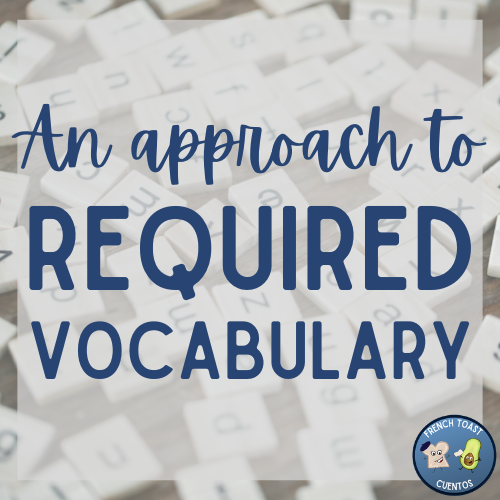Using a Required Textbook? Here’s How to Integrate CI Strategies
This year I am in a new school and I love it! I love the my new colleagues and students! Our department is well aligned, and we are super in sync. We use Realidades 1 (grades 7-8) and have required vocabulary and grammar points for each unit. I really want my students to perform well on our common assessments and be prepared for next year.
At first, I wondered how to incorporate CI activities into such a well-developed program without either falling behind pace or leaving out a bunch of target vocab and grammar.
Now its May and I am happy with how things have gone this year. IT’S WORKING!
How I Make it Work
I take the I DO, WE DO, then YOU DO approach.
Begin every unit with a story. This is the “I DO” because I provide the language in context as the foundation of the language.
Embed required grammar and chapter vocab into the story.
Personalize the story content - ask questions to help students make connections to the content and do LOTS of shared writing too! “WE DO”
RE-READ A TON! I do lots of re-reading games! “WE DO“
Complete written practice activities (cloze, conjugation, matching, multiple choice) to encourage comprehension of “YOU DO”
Presentational performance task: “YOU DO”
Where Do I Get the Story and Activities?
I write them! It’s my favorite part of the preparation. Often, I will have students contribute to the story creation or choose from one of two endings.
I write activities that have PURPOSEFUL communicative goals. I want them to feel like making meaning with the language has value to them. For example, when I taught my 7th graders about the school day, they had to fill out their daily schedules on an empty graph and then ask and respond to classmates’ questions. We tallied preferences, teachers, and classes in common and learned a lot about each other.
Use ancillary materials from the textbook so students can get additional vocab practice. But - I GLOSS EVERYTHING. I approach these resources with a CI lens, so if there is a random word they won’t know, I translate it. There shouldn’t be any roadblocks to comprehensibility.
End of Unit Performance Task
As a performance task at the end of the unit, students create a conversation that mirrors the content they learned in the story.
I provide English prompts, such as “Greet each other and ask what’s the matter”. They write it, practice it, memorize it, and present it either to the class or to me in small groups.
It’s relevant content because it’s about them. AND - Since I check their scripts and help them correct errors, they end up re-reading a ton of great input SO MUCH by the time they present! In 8th grade, I ask the class several comprehension questions after the presentations.
Plus, they FEEL GOOD about speaking so much Spanish! Their confidence is up, and their affective filters are down. I love it!
Performance task - we did this after reading the bike accident story. They made props too - like paper bandages, crutches out of cardboard, and fake stitches! It was a blast!
Final Thoughts
I am seeing huge levels of engagement and kids experimenting with the language, and they are performing well on common assessments.
If you teach with Realidades and would like to try one of my stories and activity packs, I’m gradually adding them to my TPT store.
Here are a few:
Para Empezar: Days of the Week and Time
Para Empezar: Body Parts (with me duele, tiene, necesita)
Stay tuned for chapters 1a, 1b, 2a, 2b, 4a, 4b, 5a, and 5b! ! Follow my store to get updates as I publish them!
I hope this helps give you ideas if you want to integrate CI strategies with a required textbook!
~Much love,
Catherine
shop here: CI Cuentos Store Madame French Toast
Join our Facebook group here: French Toast Cuentos World Language Collaboration








